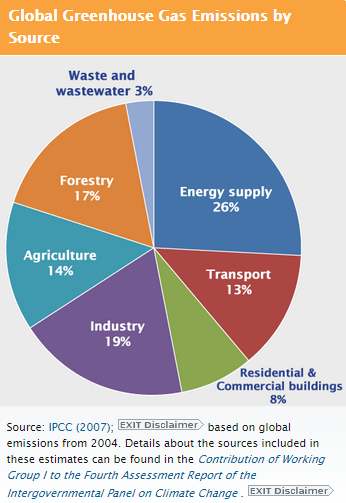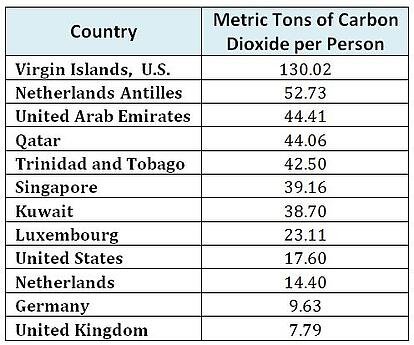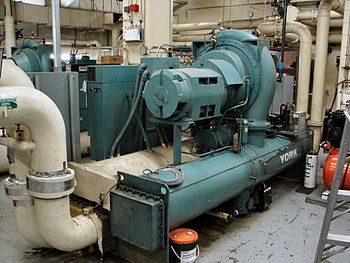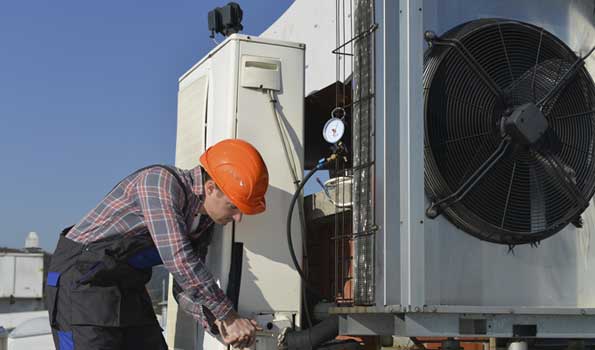I take climate change very seriously and do what I can in my personal life and through my career in energy efficient building commissioning to mitigate my impact on the environment. But I am also cautious of doomsayers who call for unrealistic achievements or all is lost. So I was motivated to do some investigating recently when I read that the Intergovernmental Panel on Climate Change states that “global emissions need to hit zero by 2100 to keep global warming below 2°C by the turn of the century.” That struck me as such an idealistic goal. Can we really do that? I decided I wanted to educate myself and, of course, found that this iceberg is deeper than I expected, and the answer is not simple. In this post I’d like to share its complexity and, in a subsequent post, I will speak to my interpretation of realistic goals.
Let’s First Define the Problem
The last year for which there is enough data to compare CO2 emission sources is 2011. In that year, the “global CO2 emissions from fossil-fuel combustion reached a record high of 31.6 gigatonnes (Gt)…an increase of 1.0 Gt (3.2%) over 2010.” The largest contributors, in order of impact, are China, the United States, and Europe. China surpassed the United States for the first time in 2011, mainly due to its increased use of coal for electrical generation. China contributed 20% of the total global emissions and increased its emissions by 9.3% in 2011 alone. The United States contributed 18% of the total global emissions and reduced emissions in 2011 by 1.7%. (Unfortunately, this is primarily due to the ongoing switch from coal to natural gas in power generation and our sluggish economy, rather than making actual strides in energy reduction.) Europe contributed 16% of the total global emissions and decreased their emissions by 0.6% in 2011.
While electrical generation and transportation contribute a significant portion of the global emissions (39% together); agricultural and forestry development together contribute another 31%. Carbon emissions from clearing forested land; farming and fertilizing; and the farming and processing of edible meat, impact global emissions more than I expected.
 Figure 1. Global Greenhouse Gas Emissions by Source. IPCC 2007.
Figure 1. Global Greenhouse Gas Emissions by Source. IPCC 2007.
Another considerable portion (27% of global emissions) stems from commercial and residential buildings and the industry sectors. This includes on-site energy generation and burning fuel for building heat and industrial processes. The waste and wastewater portion is small (3% of global greenhouse gas emissions), but 3% of a large number is still significant enough to devote some attention to it.
So Is Net Zero Possible?
I will devote another post to answering my initial question of the feasibility of the world becoming net zero in the next 85 years by researching legitimate opportunities in each of the above mentioned sectors. But for now, I want to leave off with a few interesting comparisons between some countries*:
These countries are all developed – yet their differences are extreme. Take Luxembourg, Germany and the Netherlands for example. All three are agricultural, densely populated countries with industries and similar climates and lifestyles. Yet Germany, with its strong focus on energy-efficiency and renewable energy sources, produces 41% of the CO2 emissions that Luxembourg does. What can we learn from Germany that can be adapted to other developed countries? Even more importantly, what can developing countries learn from the old world that can help them avoid the carbon intensive infrastructure that we are strapped with?




